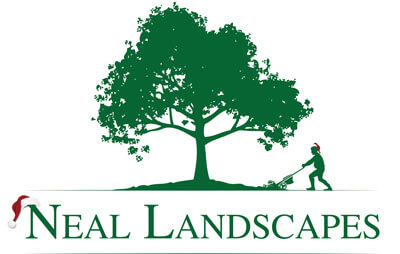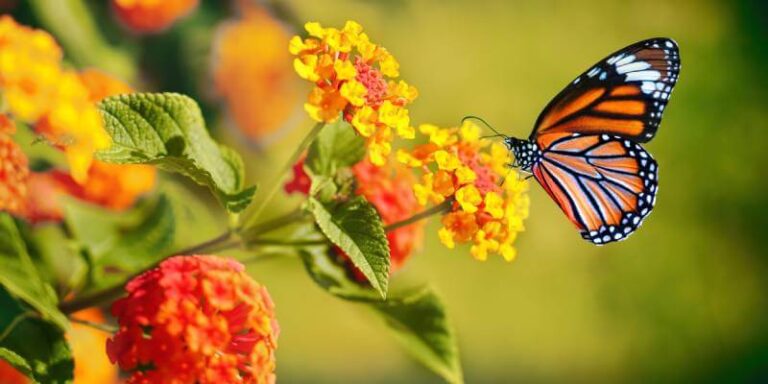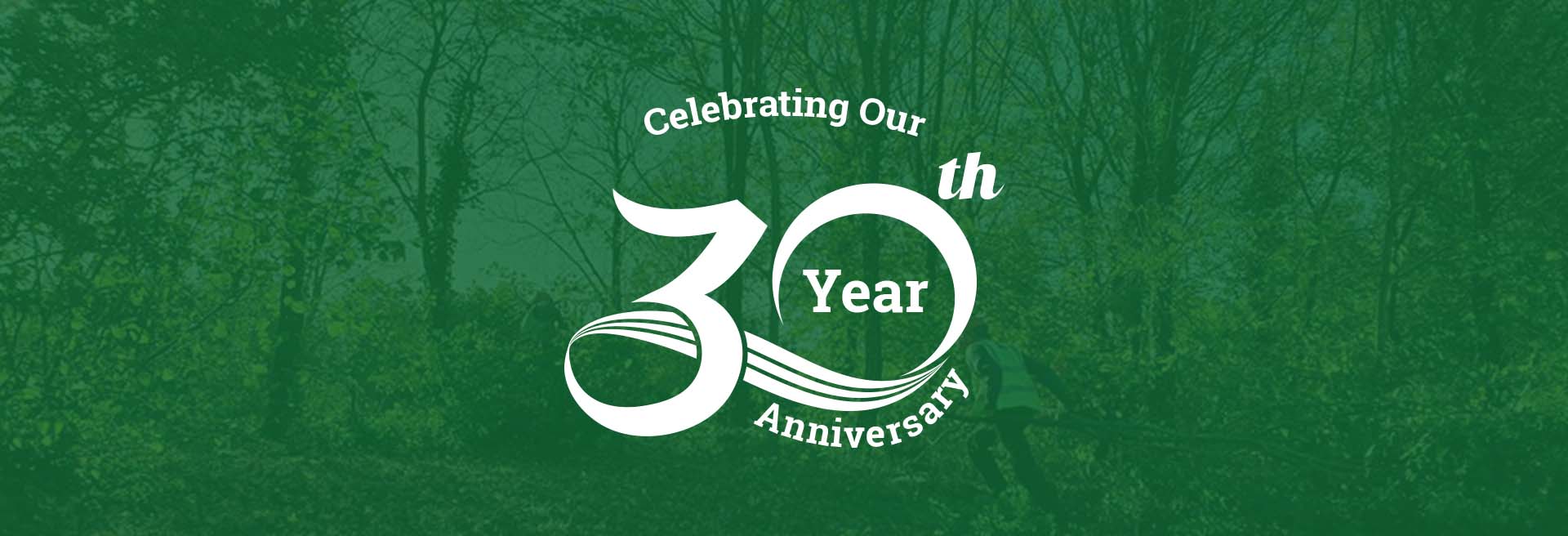From bees and butterflies to birds, our natural world is filled with wildlife looking for a space to shelter, eat and drink – and your garden is the perfect retreat! Whether you have a large outdoor space or a balcony, everyone can make a conscious effort to protect our British wildlife and give them the means to flourish. If you’re unsure where to start, why not take a look at our useful advice on how to attract wildlife to your garden?
How To Attract Wildlife To Your Garden: Increase Biodiversity With These Top Tips
For more than 30 years, we’ve been providing grounds maintenance in Milton Keynes to sites of all scales and remain committed to sharing our knowledge on how to protect our environment. Why? Because according to The Wildlife Trusts, the UK is one of the most nature-depleted countries in the world, and unless we make a change now, we may lose many of our precious species. Adopting even one of our ideas will make a huge impact, so without further ado, let’s take a closer look at the following:
- Choose Wildlife Friendly Plants
- Invite Wildlife By Building Hotels
- Use Eco-Friendly Gardening Methods
- Provide Food & Water All Year Round
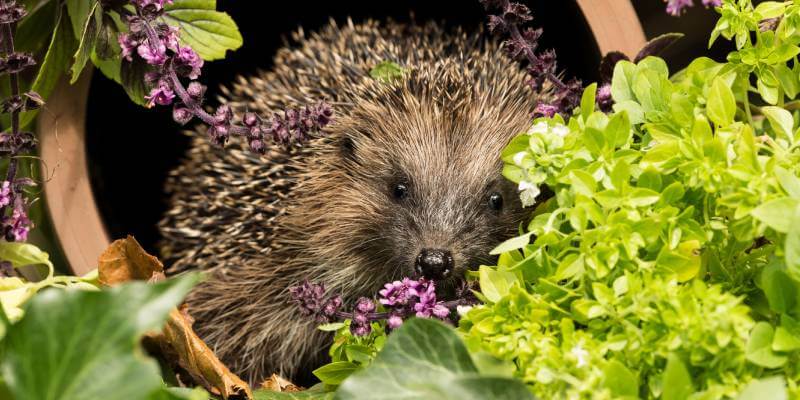
Choose Wildlife Friendly Plants
By far, one of the easiest ways to increase biodiversity is to choose plants with their benefit to wildlife in mind. Butterflies, bees, caterpillars and other insects rely on flowers, plants and hedges to feed on nectar and take shelter, so by introducing wildlife-friendly species into your garden, you will instantly increase your likelihood of visitors. Here are just some ideas on how you can incorporate these into your outdoor space:
Plant Climbers:
Climbing plants are a win-win; they not only look beautiful but also provide valuable shelter for wildlife. Some of the most popular species include:
- Ivy: Ivy is the perfect example of a wildlife-friendly plant. It provides shelter for birds and hibernating insects, berries for birds to eat and nectar for bees to pollinate.
- Climbing Roses: Along with providing nectar and pollen, the leaves on particular varieties of climbing roses are used to line the nests of leafcutter bees.
- Clematis: In Autumn, clematis provide wispy seedheads which, if left, will be taken by birds to use as material to create their nests in spring.
It is important to keep in mind that climbing plants do take a little extra TLC during the initial stages as they must be trained. Take a look at Pyracantha for a host of helpful tips on how to plant and train climbers.
Create A Border Of Plants:
Most gardens are designed with a border of planting space around the edge, which is perfect for inviting wildlife, especially bees and butterflies. We recommend opting for shrubs and perennials as they are far more long-lasting, meaning they will flourish year after year. These include sedums, buddlejas, hawthorn and achilleas, to name just a few. Jacksons Nurseries has a wealth of wildlife-attracting plants available to order online.
Hang Baskets:
If you do not have any ground planting space available, hanging baskets are the perfect alternative. We recommend not only planting flowers that attract wildlife but also using branches and lawn moss to line the basket, as this creates a home for insects. Head over to Gardeners World for a great how-to guide on creating the perfect wildlife-friendly hanging basket.
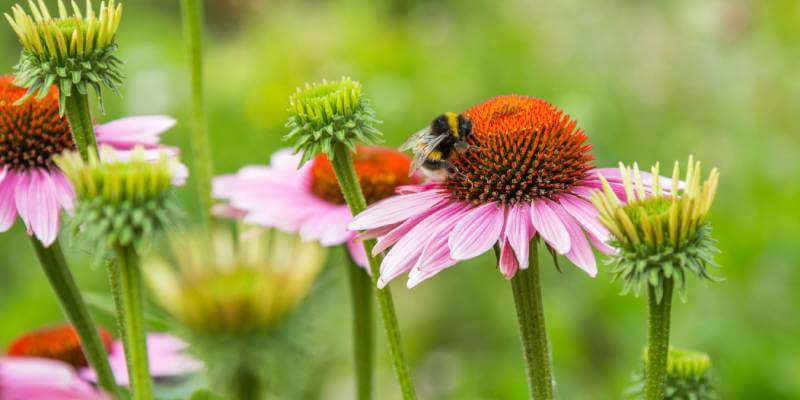
Invite Wildlife By Building Hotels
If you have a particular species of wildlife you would like to attract, why not create them a cosy, ready-made home? In more recent years, we have been making a conscious effort to offer wildlife hotels as part of our landscape maintenance in Milton Keynes, and they have gone down a storm! These hotels are super easy to make; check out the guides below for more information:
How To Make A Hedgehog House
Before delving too deep into building your hedgehog house, it is first important to ensure that your spiky little friends have access to your garden. You can do this by cutting small entrance points in your fences – with your neighbour’s permission, of course!
When choosing a spot for your hedgehog house, opt for a quiet, shaded area sheltered from the wind. Hedgehogs love to be tucked away, so the ideal location would be in the corner of your garden, behind a shed or under thick vegetarian.
Making your hedgehog house is pretty straightforward. You will need timber, nails and metal hinges to make the shelter itself, then soil, dry leaves and polythene sheeting to make the home welcoming and comfortable. Follow the guide on The Wildlife Trusts to create a safe place for hedgehogs to retreat.
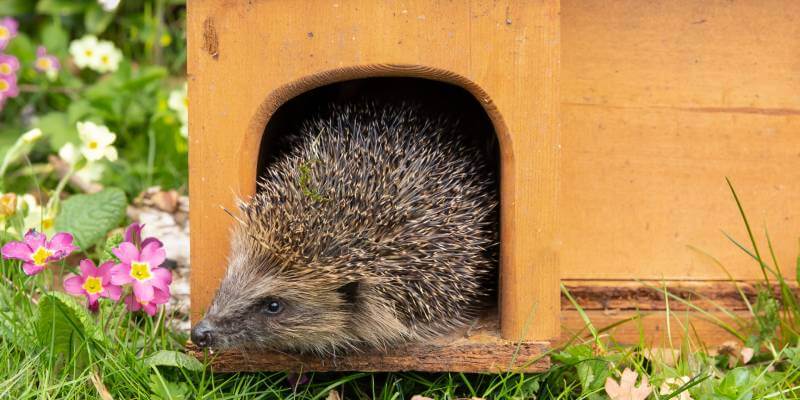
How To Make A Bee House
Creating a bee hotel is a fantastic way to invite solitary bees into your garden and provide a safe place for them to lay their eggs. While bumblebees and honeybees live in colonies, solitary bees build their own nests, usually in tunnels, so this is what you will base your design on.
To get started, you will need a plank of untreated wood to build your frame and hollow stems, bamboo canes and reeds to create tunnels. We recommend opting for a range of different diameters to attract as many bees as possible. You can then use this guide by the Woodland Trust to begin building your bee house.
Once your house is complete, it should be placed at least a metre off the ground and facing the sun. We also recommend planting some bee-friendly flowers nearby (but not blocking the entrance) to attract as many bees to your garden as possible.
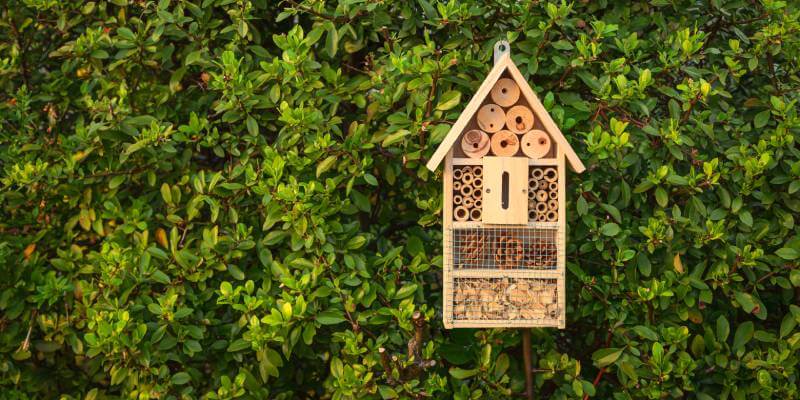
How To Make A Butterfly House
According to Butterfly Conservation, half of the British butterfly species are now on the red list for extinction, so by creating a safe retreat, you will be helping to save some of our most beautiful native wildlife.
The beauty of building a butterfly house is that if you do not feel confident creating every component from scratch, there are many super easy kits available. The Dana Butterfly House Kit on CJ Wildlife has been designed by nature experts and, once built, can be decorated with colourful paintings.
After building your butterfly house, it’s now time to attract butterflies. To do this, place a small sponge into a dish and then pour over a sugar solution. This is made by adding 1 part sugar to 4 parts water in a saucepan and then boiling until the sugar has dissolved. Leave the dish inside your butterfly house, and be sure to change it weekly to avoid mould.
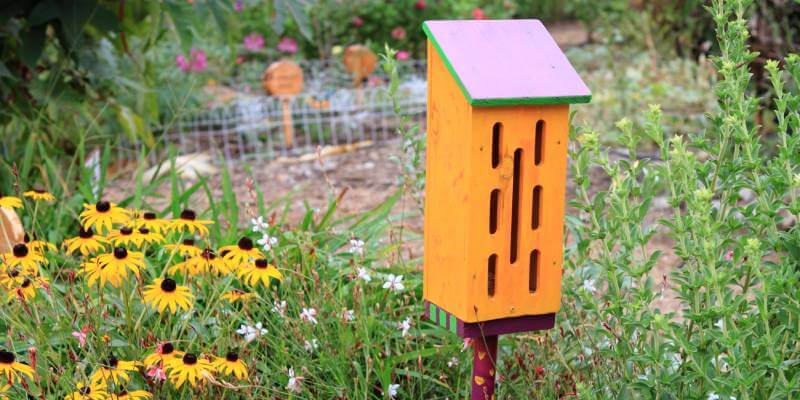
Use Eco-Friendly Gardening Methods
Adapting your gardening methods to take a more nature-conscious approach not only reduces your carbon footprint but also makes your garden a healthier environment for wildlife to thrive. And by far, the easiest way to begin is through composting.
Composting allows you to repurpose your garden waste and old fruit or vegetables into homemade compost. Along with being far more environmentally friendly than buying pre-made compost, it also creates a much healthier soil for bugs to live and grow. Not only this, but you’re likely to find that small creatures will shelter in your compost heaps as they love the heat that decomposition releases. To learn more about composting and how to get started, take a look at the RHS website.
More ways that you can use more sustainable methods to keep your garden in top condition include:
- Avoid using peat-based compost as it releases greenhouse gases
- Opt for plant pots made from bamboo or wood rather than plastic
- Mow your lawn less to encourage butterflies, bees and moths
- Wait until the end of winter to cut back hedges to provide shelter for wildlife
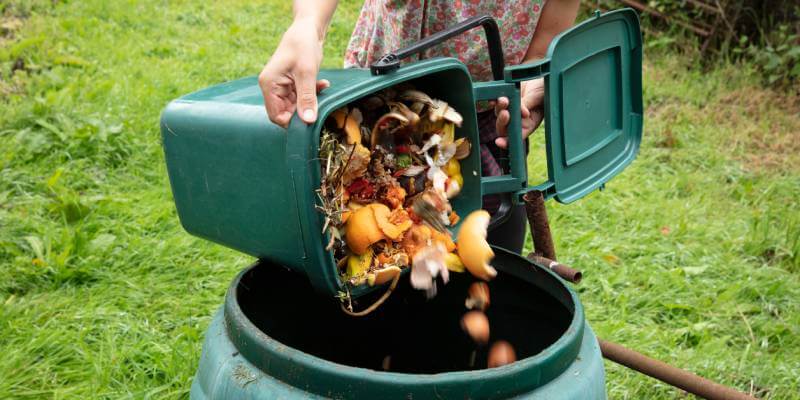
Provide Food & Water All Year Round
Providing sources of food and water is guaranteed to support your local wildlife and, particularly during extreme weather, can act as a lifeline. Much like the wildlife houses, you can purchase pre-made options or spend your next free afternoon creating your own.
Making water available in your garden couldn’t be easier, and even a solution as simple as putting a dish of clean water for drinking and bathing can make a huge difference. You could also make a hole in your soil and place an old washing-up bowl inside.
When it comes to food, depending on the wildlife you wish to attract, we recommend leaving out the following:
- For birds: Sunflower hearts, peanuts, or bird seed mixes.
- For hedgehogs: Specially made hedgehog kibble, cat biscuits or insects.
- For foxes: Berries, fruit, cheese or unsalted peanuts.
- For badgers: Earthworms or fruit, especially apples and pears.
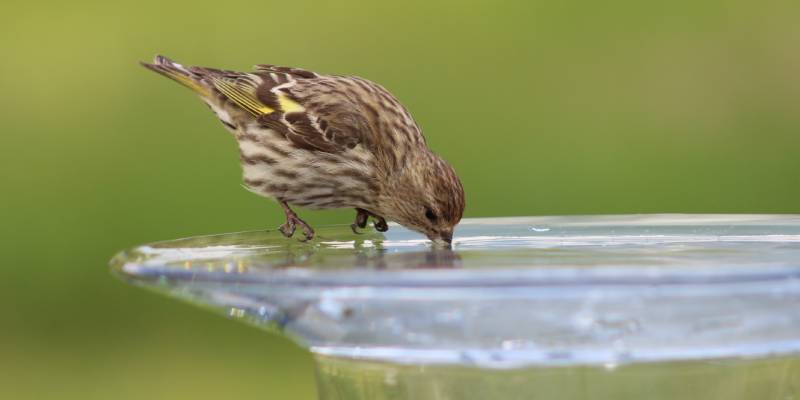
Create The Perfect Hotspot For Wildlife To Thrive
Our British wildlife is under enormous threat, which means that making even the smallest of changes to your garden can make a huge difference. We hope that you’re feeling inspired to begin creating an outdoor space where wildlife can feed, shelter and, most importantly, thrive.
As always, if you’re a commercial site manager, landlord or business owner and looking for new ways to make your building more wildlife-friendly, our team are always more than happy to help. Feel free to contact us today to discuss our grounds maintenance and how we can tailor your package to your needs.
